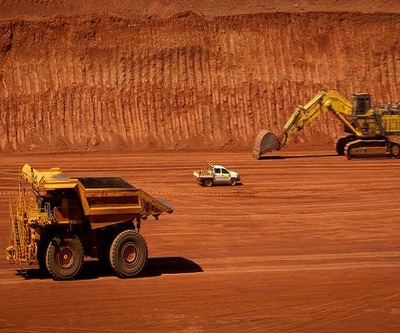
Long held assumptions about the direction and dynamics of the iron ore market have been tested in 2014.
After hitting a high of $158.90 in February, the industry was jolted on March 10, when iron ore suffered the worst one-day decline since the 2008-2009 financial crisis, cratering 8.3% in a single session.
The recovery from there was swift, but by June 16 the steelmaking raw material was sliding again.
On Wednesday benchmark Northern China 62% Fe imports fell again to trade at $82.20 a tonne, a fresh five-year low and down 40% this year.
Iron ore is fast becoming a big boys game and a number of miners have already fallen by the wayside including Sweden’s Northland Resources, Australia’s Cairn Hill and Canada’s Labrador Iron Mines.
While the majors such as Rio Tinto, Vale, BHP Billiton and (less so) Fortescue can still make money at these prices, for smaller producers there’s more pain ahead.
According to the Financial Times, analysts at Macquarie said Wednesday west African iron ore producers like African Minerals and London Mining faced an “existential threat” over the next six to 12 months without “meaningful capital injections and/or debt reorganisations.”
The UK paper also quotes from a note by Christian Lelong, analyst at Goldman Sachs, who said major producers are underestimating the extent of potential price declines:
“The long period of above trend in profitability enjoyed by the iron ore industry is at an end, destroyed by the billions of dollars major producers have ploughed into new, low-cost capacity.
“In our view, 2014 is the inflection point where new production capacity finally catches up with demand growth, and profit margins begin their reversion to the historical mean; in other words, the end of the Iron Age is here.”
Goldman on Wednesday also cut its price forecasts by $10 to an average $80 a tonne next year, with only slight declines over the next two years.
Strong medicine indeed, but Lelong is not the biggest bear out there.
Bloomberg quotes Alberto Calderon, former BHP exec and now a board member of Orica, the biggest supplier of chemicals and explosives to the mining industry:
“Right now the wall of excess supply is obvious. At some point someone has to take a lead and say we are all just heading towards a cliff. At some point, common sense will have to prevail.”
Calderon also said the majority of mine closures or output cuts “won’t necessarily take place in China as producers anticipate,” but a much of it will come from higher-cost miners in Australia:
“Until mines close it’s a world of $70 prices of iron ore.”
Comments
Itabirite
Rio & BHP – Great way to kill the goose that laid the golden egg.